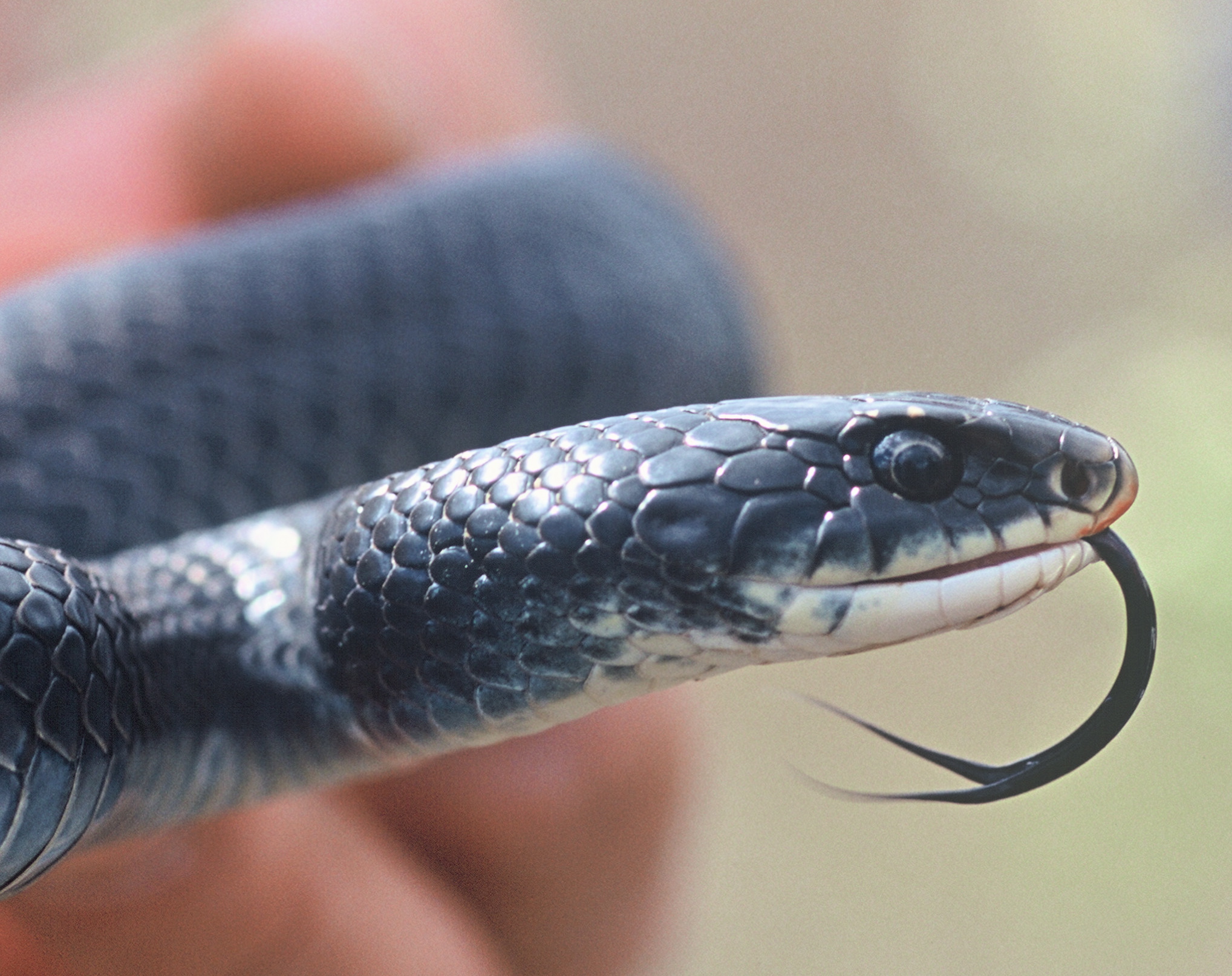
Vermont Fish & Wildlife and VTrans partnered to improve habitat for a rare North American racers (a non-venomous snake) at a road project in Guilford, Vt. Photo courtesy of Sue Morse, Keeping Track.
The Vermont Fish & Wildlife Department has partnered with the Department of Forests, Parks & Recreation and the Vermont Agency of Transportation to provide habitat for a rare snake species near a truck weigh station on Interstate 91 in Guilford.
Doug Blodgett, snake biologist for Fish & Wildlife, has been working with VTrans to create habitat for North American racers, a rare, black, non-venomous snake that is found in only a few towns in the southeast corner of Vermont. Racers are a threatened species in Vermont and they are listed as a Species of Greatest Conservation Need in Vermont’s Wildlife Action Plan.
The racers were discovered near the site where an old truck weigh station was scheduled to be rebuilt and expanded. As part of the permitting process, VTrans agreed to use some scrap material and equipment from the project to improve habitat for the threatened snakes.
“Racers are a protected species in Vermont, so we wanted to work with VTrans to make sure this development didn’t harm these snakes,” said Blodgett. “In the end, we have worked together to dramatically improve habitat conditions for them and potentially a variety of other snake species.”
VTrans used overburden from the project – rocks and boulders that are normally considered waste – to build places for the racers to hibernate in winter, basking areas for them to warm up their body temperature, and grassy travel corridors for them to move and feed. The travel corridor was created on the adjacent Roaring Brook Wildlife Management Area, which is owned by the Fish & Wildlife Department and is managed as wildlife habitat.
“VTrans has been a great partner for the Fish & Wildlife Department on a variety of issues, from connecting blocks of wildlife habitat divided by highways to improving fish passages in culverts under roads,” said Blodgett. “Many of these projects improve conditions for wildlife, and they make the roads safer for drivers, saving money in the long-run.”
By leaving material onsite for the snakes rather than transporting it away, VTrans was able to save tens of thousands of dollars on the cost of the project. Racers feed on rodents, insects, and other small animals.
“This was an interesting experiment that resulted in us all learning a lot about creating quality snake habitat,” said Blodgett. “It was a very cooperative, multi-agency project, with Forests, Parks and Recreation District Forester Tim Morton working closely with VTrans excavator operators to guide the construction of the habitat improvements.”
